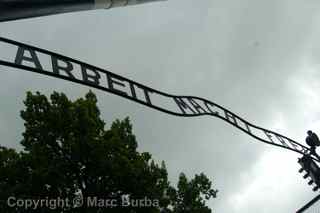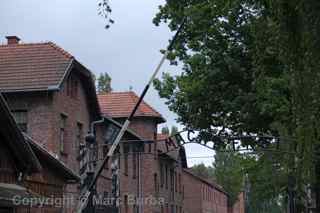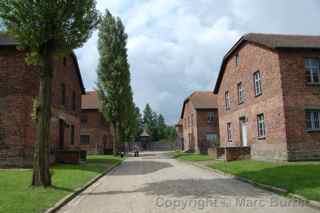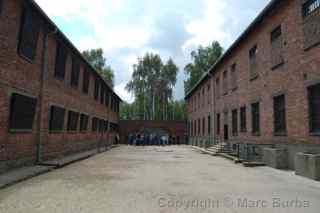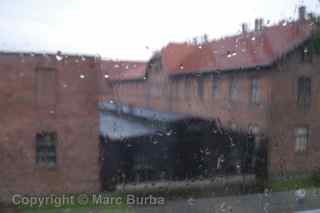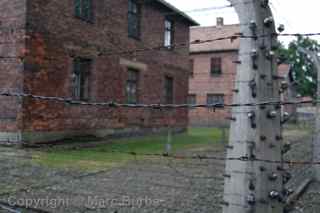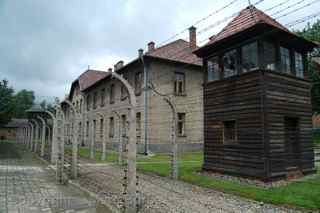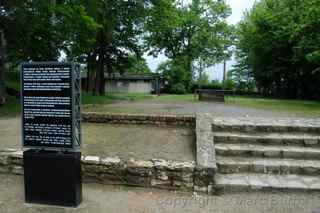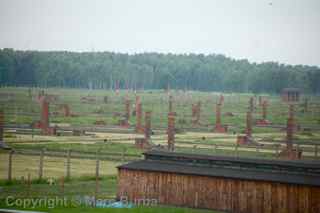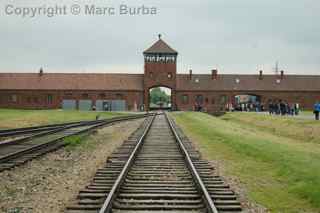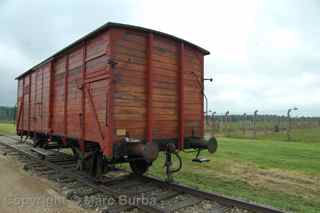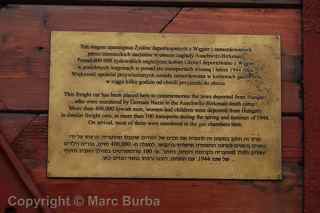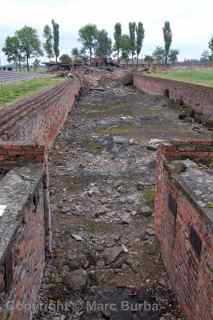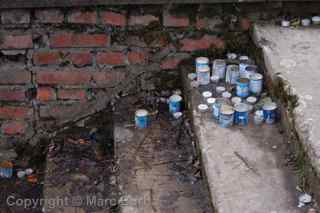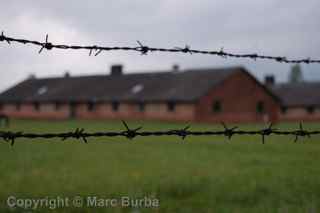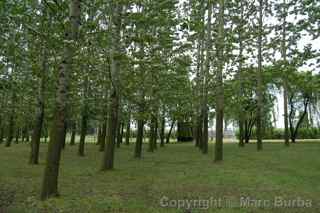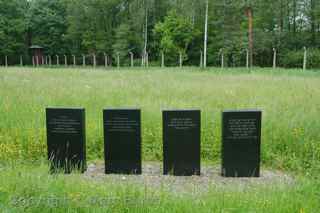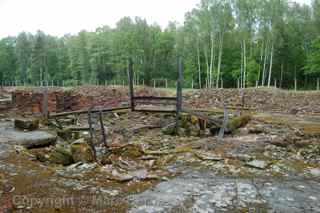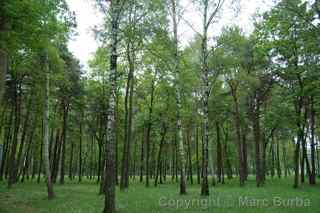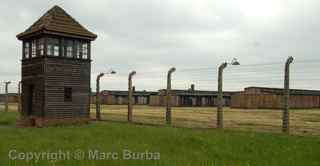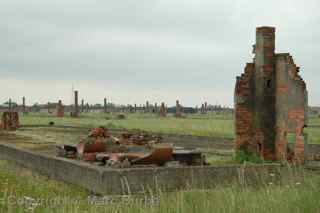Auschwitz-Birkenau concentration camps, Poland
It’s uncomfortably cold for an early June afternoon. Dark clouds are overhead, and there’s a biting wind. It’s as if the dead are calling out.
I am at the midway point of Auschwitz II-Birkenau concentration camp’s main north road. It’s about two-thirds of a mile long, but there’s not another person in sight in either direction. I am utterly alone.
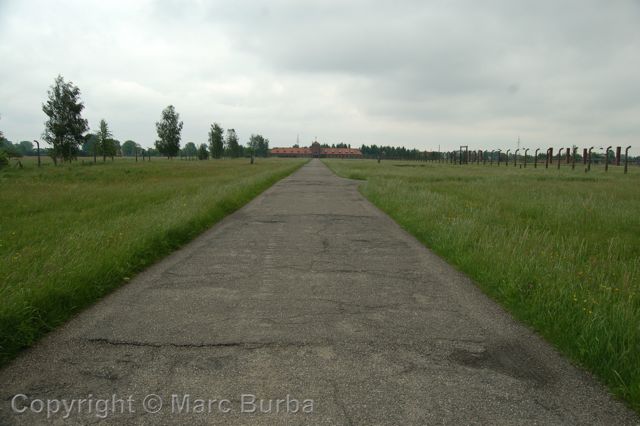 More than 1 million people were exterminated here during World War II. The spot where I’m standing is where my partner and I had planned to meet, after he doubled back on another road about 45 minutes ago for a restroom break. But the path he was to take here, between rows of what were once barracks, is blocked at the end — its gate is chained and padlocked. All around: 13-foot high, barbed-wire fences. He’s nowhere in sight.
More than 1 million people were exterminated here during World War II. The spot where I’m standing is where my partner and I had planned to meet, after he doubled back on another road about 45 minutes ago for a restroom break. But the path he was to take here, between rows of what were once barracks, is blocked at the end — its gate is chained and padlocked. All around: 13-foot high, barbed-wire fences. He’s nowhere in sight.
What now? There was no contingency plan. We have no phones here, and no one is around. Do I turn around, or do I continue on this route and complete a big circle? Just for a moment, I understand the sense of panic, of separation, that countless families must have felt on this spot decades before me as they were split apart — some destined for forced labor, others destined for death.
• • •
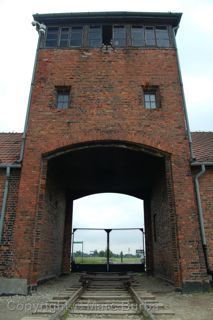 At the height of its use, Birkenau had four working gas chambers and crematoria, each with an ash pit nearby to dispose of remains. A couple of hours earlier, we entered at the spot where all of the prisoners had: the main guard house. We first climbed its lookout tower to realize the scope of this place — foundations of barracks stretched as far as we could see. Just about all of them have been razed; only their brick chimneys remain standing.
At the height of its use, Birkenau had four working gas chambers and crematoria, each with an ash pit nearby to dispose of remains. A couple of hours earlier, we entered at the spot where all of the prisoners had: the main guard house. We first climbed its lookout tower to realize the scope of this place — foundations of barracks stretched as far as we could see. Just about all of them have been razed; only their brick chimneys remain standing.
Straight ahead is the rail spur. Transport trains brought in boxcars filled with deported Jews, Poles, Gypsies, Soviet prisoners of war, and others from all over Europe. This was the selection area, where guards pulled out those fit for forced labor. Everyone else — women, children, the elderly — were sent to the gas chambers.
We walked to the end of the rail line, where the rubble of two gas chambers and crematoria remain. The SS destroyed them in January 1945 as Soviet troops approached. Dozens of small candles have been placed on the steps leading to what were the gas chambers. Nearby are water-filled ash pits where remains were dumped. Four black granite markers at each one acknowledge, in four languages, that these are sacred spots.
Behind the crematoria are rows of birch trees. This path is beautiful. It could be mistaken for a park if not for the watchtowers in the distance. This is where my partner and I split up. The only restroom close by was locked, but there was still so much more to see. We agreed that he would double back and I would continue on alone. Earlier, we had passed the path that cut between barracks. We agreed to meet at its far end.
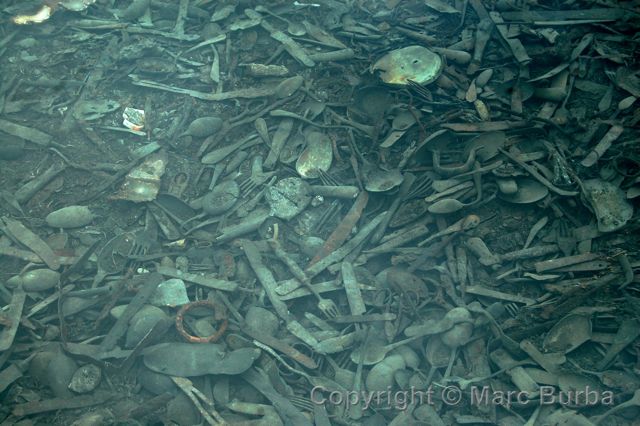 Most visitors to this camp today are on organized tours that take them no farther than the gas chambers we had just passed. So as I continued along the western perimeter, I saw only a few other people. I was alone as I walked through the Central Sauna building, where newly arrived prisoners who weren’t gassed were registered and disinfected before being sent to hard labor. One room displays photos found in luggage taken from deportees. Across from here were the warehouses where belongings were taken and sorted, then sent to Germany for use. The Nazis burned these buildings too when they left the camp; in one foundation, under a Plexiglas covering, are thousands of kitchen utensils that survived the destruction.
Most visitors to this camp today are on organized tours that take them no farther than the gas chambers we had just passed. So as I continued along the western perimeter, I saw only a few other people. I was alone as I walked through the Central Sauna building, where newly arrived prisoners who weren’t gassed were registered and disinfected before being sent to hard labor. One room displays photos found in luggage taken from deportees. Across from here were the warehouses where belongings were taken and sorted, then sent to Germany for use. The Nazis burned these buildings too when they left the camp; in one foundation, under a Plexiglas covering, are thousands of kitchen utensils that survived the destruction.
Beyond this are two more crematoria, and a meadow of wildflowers among the birch trees. This is the spot where deportees often were forced to wait before they were herded into gas chambers.
The Nazis planned to make this camp even larger. An extension to the north was partially completed when the camp was abandoned in 1945. That’s along the northernmost road, opposite where I stand at this chained and padlocked gate.
I decide to complete my circle of the camp. We reunite about 30 minutes later at the guard tower — a reunion that so many others here never had.


